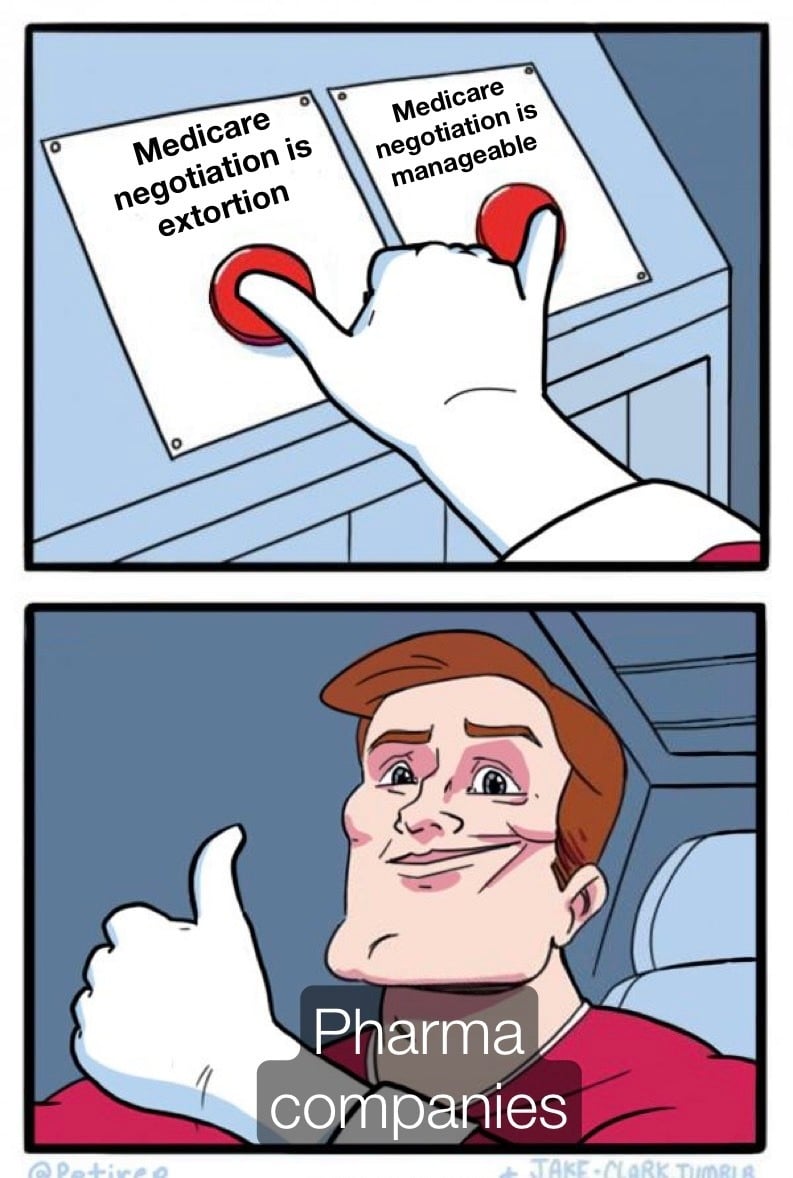You’re reading the web version of Health Care Inc., STAT’s weekly newsletter following the flow of money in medicine. Sign up to get it in your inbox every Monday.
A self-interested plea from Peter Orszag
Peter Orszag, CEO of Lazard, went on CNBC last week and criticized how the Federal Trade Commission and Department of Justice were gumming up health care mergers. Look closely at what he said (emphasis mine):
advertisement
“In health care, they [the DOJ] have a task force on vertical integration, but that’s what the policy impetus is towards,” Orszag said. “So, you’ve got different parts of the government in conflict with one another.”
If the name Peter Orszag sounds familiar, that’s because he was instrumental in crafting the Affordable Care Act in the Obama administration. So, to recap: A prominent policymaker helps create a major health care law that he anticipated would encourage more health care mergers, leaves government for a global investment bank that has since advised on numerous vertical health care mergers (like Aetna’s 2018 sale to CVS Health), and now wants antitrust officials to dial back their reviews because they’re going against the policy he made — and messing with his business.
Revolving door aside for a moment: Orszag has been an evangelist for vertical consolidation in health care. But there is no evidence those deals have led to lower prices or improved quality of care for Americans. In fact, the evidence suggests they have made things worse. Read the story for more.
advertisement
The known and unknown of Medicare’s negotiations
Since 2003, Medicare has been prohibited from negotiating drug prices with pharmaceutical manufacturers. That era is over.
The initial numbers indicate Medicare is a better negotiator than the health insurance companies and pharmacy benefit managers that run Part D plans. (It helps to have the power to levy penalties.) As my colleague Rachel Cohrs Zhang reported, if the negotiated prices for the 10 selected drugs had been in effect in 2023, Medicare would have saved $6 billion on net spending, which would have been a 22% reduction. (Ignore the inflated numbers that use the drugs’ list prices.)
But there are some “buts.” To start: These negotiated rates won’t go into effect until 2026, meaning the savings will almost certainly be less since rebates and generics will likely drive current net prices further downward. In addition, we have no idea what the savings look like for each individual drug because CMS can’t disclose individual net prices. “We just can’t detail it out further because of the proprietary nature of rebates,” CMS’ Center for Medicare Director Meena Seshamani told me last week. Seshamani also said she still thinks the $6 billion figure is a “good order-of-magnitude estimate” of what can be saved in 2026.
There will be a lot to sort through in the coming years, but even drug companies themselves have viewed this first pass as manageable. It’s also worth remembering that Medicare already sets prices for hospitals, doctors, nursing homes, and other providers — and the world has not ended.
Battle of the giants, part two
Earlier this month, my colleague Tara Bannow told you about a “battle of the giants,” the ongoing contract dispute between UnitedHealthcare, the country’s largest health insurer, and HCA Healthcare, the country’s largest hospital chain. At stake is UnitedHealthcare members’ in-network access to 38 hospitals in four states.
UnitedHealth has a similar spat playing out with another hospital giant, Trinity Health. But this conflict has been much more confusing because it’s created a messy patchwork of in-network and out-of-network members, even among people who live in the same areas.
There are now two Trinity regions in the Northeast that are out-of-network with UnitedHealthcare, although some members are protected by grace periods until Sept. 1. For example, commercial members still have in-network access to Trinity’s hospitals, but not its doctors. Medicare Advantage members have no in-network access at all. It’s a mess. Read more from Tara.
Hospital lightning round
Nonprofit (tax-exempt) hospital systems opened the earnings floodgates last week. Just like the publicly traded hospitals and health insurers signaled, it’s clear as day that more patients are getting care, perhaps more than any other time since the Covid-19 pandemic started. Tara and I sifted through dozens of filings, and every type of service was up — inpatient admissions, observation stays, outpatient procedures, surgeries, emergency room visits. Here’s a smattering of what we saw.
- Allina Health: The Minnesota system is an exception among the bigger players, registering a -4% operating margin in the first half of this year. Allina continues to work with Huron Consulting Group to strip out costs, and it outsourced billing functions to Optum.
- BayCare Health System: An 11% operating margin and 21% total margin in the first half of this year. Not a typo. Inpatient and outpatient volumes soared, prices went up, costs went down — this Florida system has better margins than HCA and many other publicly traded companies.
- Cleveland Clinic: The academic medical center has slimmer margins than most. One large factor: Pharmaceutical expenses soared 16% in the first half of this year. Cleveland Clinic is still expected to hit almost $16 billion of revenue in 2024, making it larger than Universal Health Services.
- Henry Ford Health: The Michigan system more than tripled its operating margin to 3.5% in the first half of 2024. Henry Ford, which is trying to buy nine hospitals from Ascension, got a big spike in supplemental Medicaid payments from the state.
- Houston Methodist: Patients volumes are through the roof, putting the Texas hospital giant on pace for $8 billion of revenue and a nearly 8% operating margin.
- Kaiser Permanente: Kaiser’s 3.3% operating margin in the half of 2024 was squarely average, but its 17% net margin was something else entirely. On top of its usual healthy investment gain, Kaiser recorded a $4.6 billion bump in its “other income” category from the acquisition of Geisinger.
- Memorial Sloan Kettering: The prominent New York City cancer center’s 1.4% operating margin in the first half of the year was higher than last year, when it basically broke even. MSK recorded an 8.3% spike in radiology treatments.
- Sentara Health: An operating margin of 2.7% in the first half of 2024 was down from 4.6% in the prior-year period. That’s in part because the 12-hospital, Virginia-based system lost 120,000 Medicaid members in its health plan due to redeterminations.
More stealth transactions
We’ve documented it over and over again, but UnitedHealth Group doesn’t like to reveal what it’s buying. But one thing’s for sure: It’s still buying, a lot.
UnitedHealth entered into $2 billion worth of new acquisition agreements in the second quarter, according to a review of the company’s second-quarter financial filing. None of those transactions were publicly disclosed. And in July, UnitedHealth completed $10 billion worth of transactions that were already pending on its books. $10 billion in who-knows-how-many deals, and not a single press release or filing to give a taste of what’s going on.
A UnitedHealth spokesperson declined to comment beyond UnitedHealth’s filing. It’s fair to wonder if all these deals included more physician groups and surgery centers. We’ve already heard from a lot of people on our UnitedHealth investigation, and we’d love to hear from more.
Industry odds and ends
- There has been a bevy of cyberattacks in health care lately. One fundamental problem is simmering under the surface: “Nearly 30 years of accumulated legislation has left hospitals more focused on privacy compliance rather than a comprehensive cybersecurity strategy,” my colleague Brittany Trang reports.
- Rural Healthcare Group, an affiliate of private equity firm Kinderhook Industries, is buying Steward Health Care’s network of 5,000 physicians for $245 million, Robert Weisman of the Boston Globe reports. UnitedHealth previously was the lead buyer for Steward’s physician group, but ultimately backed out.
- An antitrust lawsuit between two New Jersey hospital systems is getting weird. CarePoint Health sued RWJBarnabas Health in 2022, alleging RWJBarnabas concocted a scheme “to destroy competition and to monopolize” hospital services by siphoning away CarePoint’s patients. Earlier this month, CarePoint asked the judge in the case to “disqualify” RWJBarnabas’ law firm, Proskauer Rose, because that firm had previously represented CarePoint and “has now turned against its former client.” Read the latest filing here.
- Remember when Elevance Health said it was creating a primary care company with the private equity firm Clayton, Dubilier & Rice? The company has a name now: Mosaic Health.
- MultiPlan has been flailing since this year’s New York Times investigation. The company has since hired a phalanx of lobbyists and PR people to push back, Chris Hamby of the NYT reports.
- Blackstone is buying a majority ownership stake in Chartis, a health care consulting company. Audax Private Equity will still hold a minority stake.
The Meme Ward


